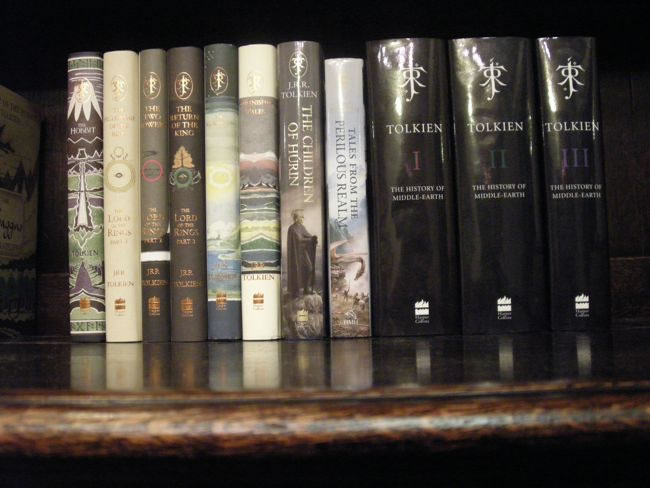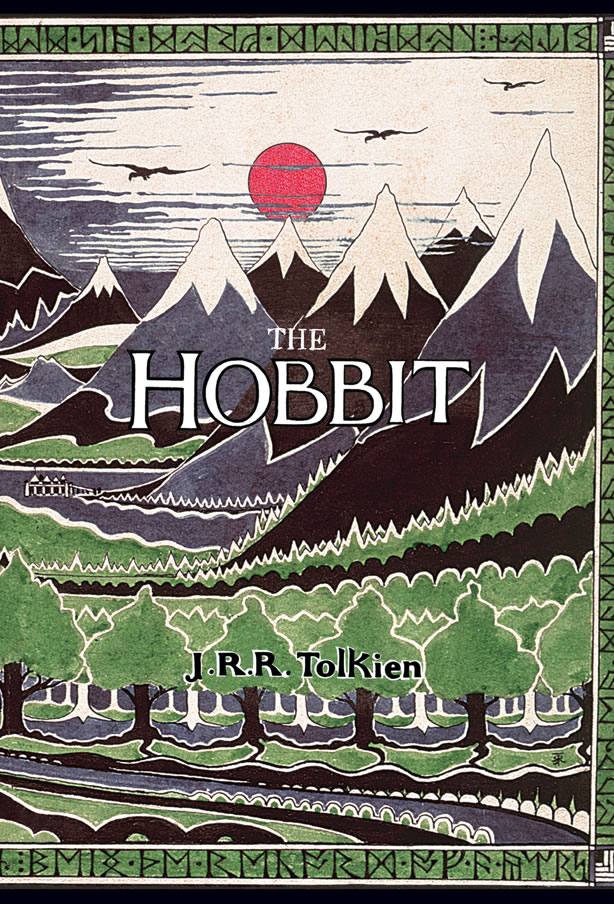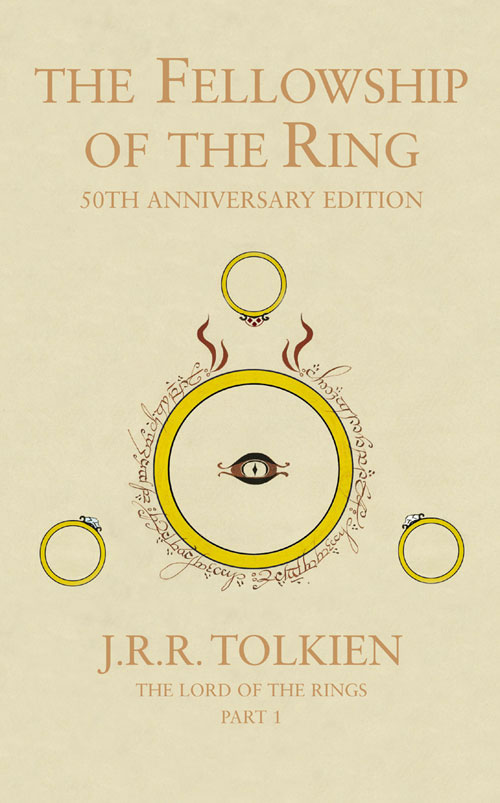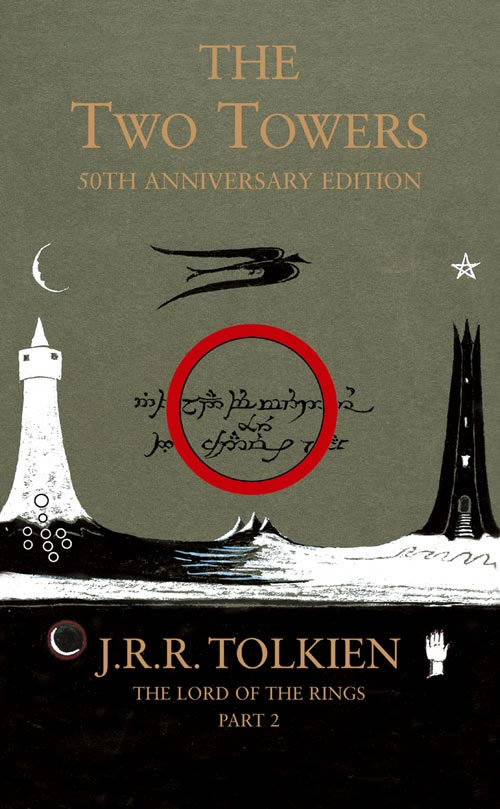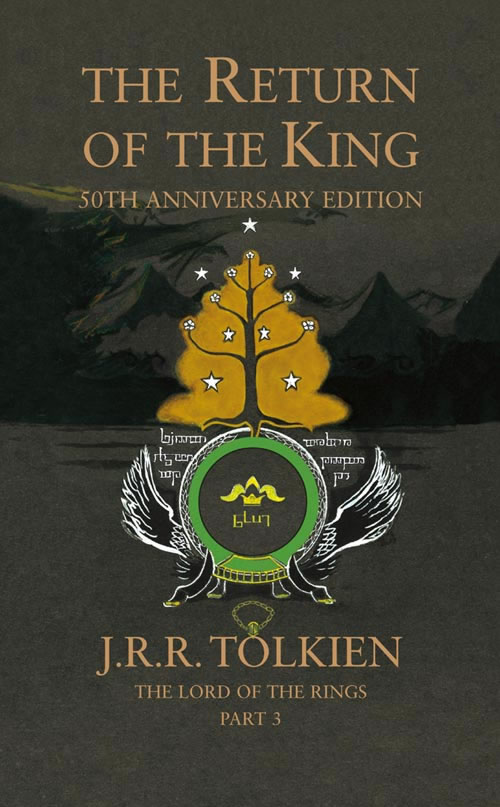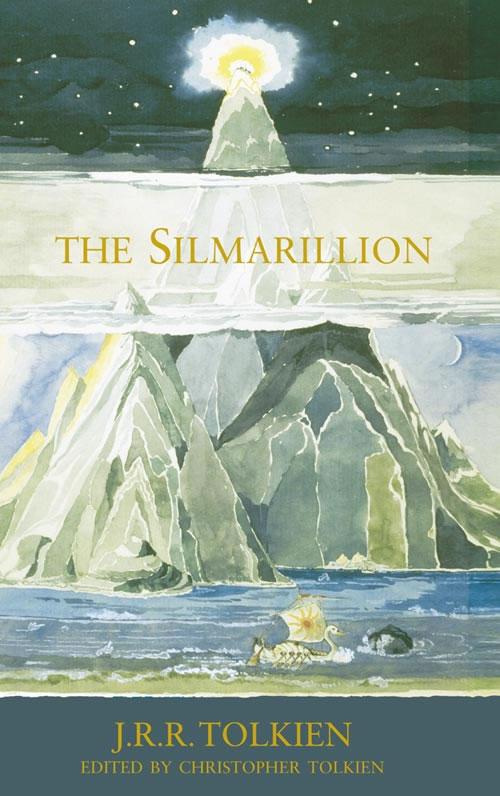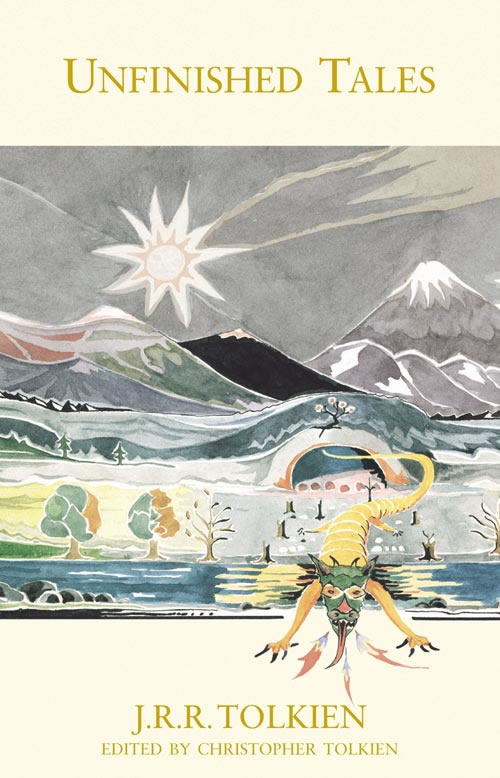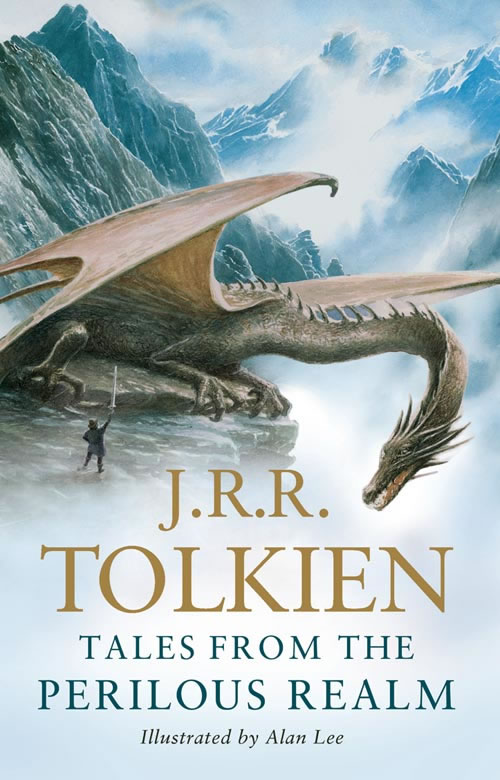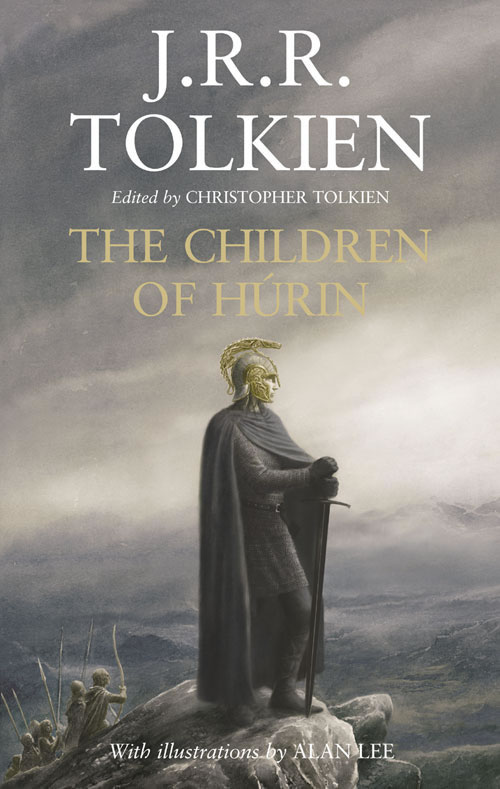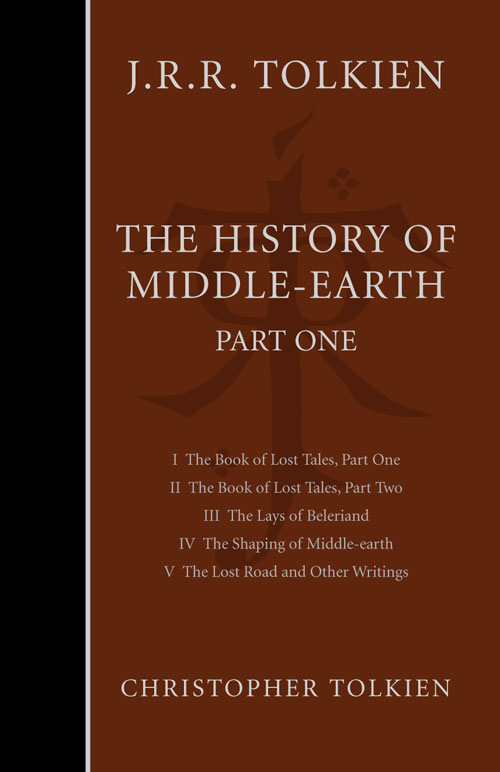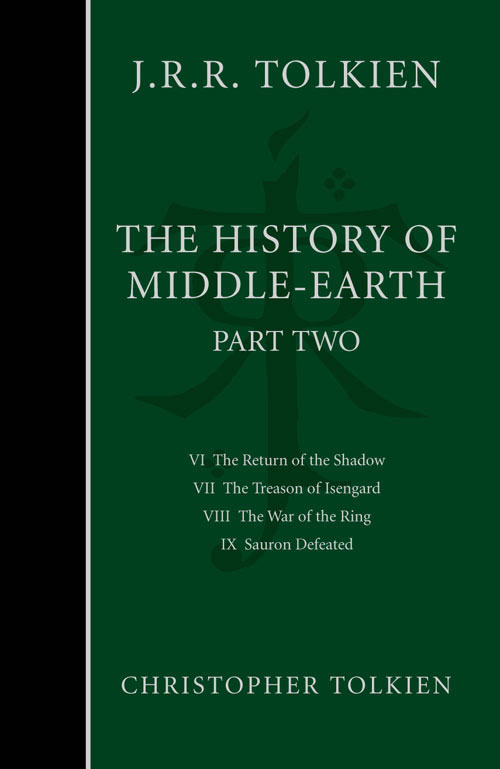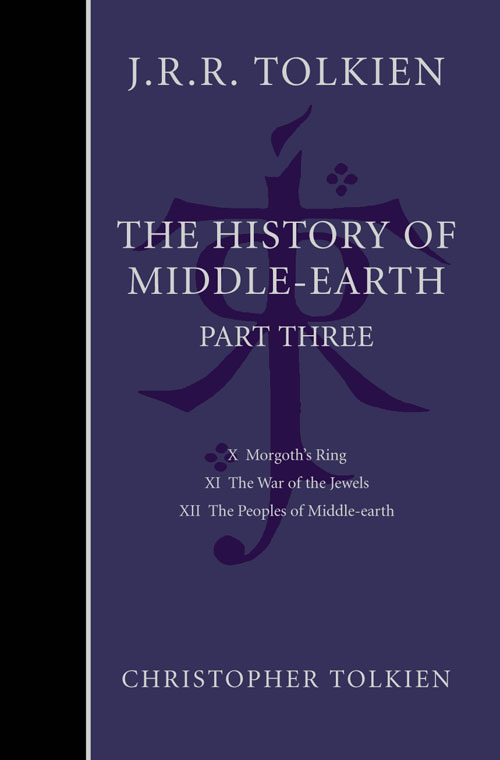Writer, editor and researcher John Garth is well known for his ongoing work on J.R.R. Tolkien’s life and creativity, and was awarded the Tolkien Society’s Outstanding Contribution Award in 2017.
His first book, Tolkien and the Great War (2003), won the Mythopoeic Scholarship Award, for which his second, Tolkien at Exeter College, was a nominee. His latest publication is The Worlds of JRR Tolkien: The Places that Inspired Middle-earth (Princeton University Press; Frances Lincoln). A further book, examining Tolkien’s creative life as a response to the crises of his times, was begun while a Fellow of the Black Mountain Institute, Nevada, and is still in progress.
Other publications include chapters in the Blackwell Companion to J.R.R. Tolkien; in Catherine McIlwaine’s Bodleian Library exhibition book Tolkien: Maker of Middle-earth; and in a forthcoming volume in memory of Christopher Tolkien.Garth has spoken on Tolkien to specialist and general audiences in the US and across Europe, as well as on television and other news media. He has taught courses on Tolkien, and sometimes C.S. Lewis too, for Oxford University, the University of Nevada in Las Vegas, and Signum University.
After reading English at St Anne’s College, Oxford, Garth worked for the London Evening Standard for many years. Besides his work on Tolkien, he writes and edits more generally, both in print and online.
Rev. Tom Emanuel (he/him/his) was born and raised on sacred Lakota land in the Paha Sapa (Black Hills) of South Dakota, which is where his father first read The Hobbit aloud to him when he was too young to remember it. Tom was trained as a social scientist at the University of South Dakota and as a theologian at the Pacific School of Religion in Berkeley, CA. He is an ordained minister in the United Church of Christ and, beginning in Fall 2022, a doctoral student at the University of Glasgow, where his research will focus on J.R.R. Tolkien's The Lord of the Rings, fandom, and post-Christian spiritual community. When he's not reading Tolkien aloud to his two small children, Tom can usually be found hiking, singing, or working away at a fantasy novel of his own. http://tolkienheadpod.com
Books by J.R.R. Tolkien - Tolkien reading order (12.08.10 by Pieter Collier)
Probably the second most frequently asked question I get is the order in which to read tolkien's works. The first being an enquiry about the value of a particular Tolkien book. The question about the reading order is however a complex one, and probably more difficult to answer than to determine the value of a collectible Tolkien book.
When you read tolkien's The Lord of the Rings, or when you watch the Peter Jackson movie adaptation, you always get a hint of the vast history that shines through and indeed when Tolkien wrote The Hobbit and The Lord of the Rings, he was already working for many years at the underlying mythologies; the stories he actually longed to write, The Silmarillion. In the end Tolkien never finished (t)his masterpiece and it was only released after his death, thanks to the editing work of his son Christopher Tolkien.
Whenever a character in one of tolkien's tales disappeared from the story line, he wanted to find out what happened to it (and to make sure when it re-entered the tale, its history and events matched with the ongoing tale). Tolkien ended up writing many texts that were not used in The Hobbit and The Lord of the Rings. At the same time Tolkien was developing the history (and languages) of Middle-earth, which resulted into The Silmarillion as we know now. But since Tolkien wrote and rewrote many of these texts during his life it took Christopher Tolkien 12 volumes to minuscule describe the whole creation process and get all written documents published.
These 12 volumes are called The History of Middle-earth. Surprisingly, before these 12 volumes Christopher Tolkien also published Unfinished Tales, which included variants or side stories from The Lord of the Rings and The Silmarillion. Actually it was because the commercial success of this edited collection of stories and essays that Christopher Tolkien embarked on the journey to publish The History of Middle-earth.
In April 2007, we received one more finished Middle-earth related tale called The Children of Hurin, partially published before in Unfinished Tales, The Silmarillion and The History of Middle-earth. Since that release it has become even more difficult to decide which book to read first and to determine a good reading order.
Next to the tales of Middle-earth, Tolkien wrote excellent poetry, other stories and fairy tales that are very worthwhile to read, it are these books that, although not taking place in the realm of Middle-earth, will be enjoyed by many and should be part of any serious Tolkien book list.
Some prefer to read tolkien's books in the order they were published, maybe this is not such a bad idea, others want to read the books in chronological order and read the history as it evolves, starting from the creation of Middle-earth until the end... yet it is a very difficult quest and I believe it is very hard to enjoy this reading order since you'll have to jump from the one book to the other constantly.
I'll include some tips on how to tackle these and will link to some nice editions to read in as well. Hope this somehow answers the question on how to read tolkien's books and hope you enjoy the reading!
The Hobbit by J.R.R. Tolkien
The best book to get introduced to Middle-earth is The Hobbit, an easy and lighthearted fantasy story, which Tolkien wrote first, without having much back-story and historical details in mind. In fact it was a story he told to his children as a bedtime story; and only because of tolkien's children pointing out mistakes, Tolkien decided to write down the tale in the early 1930s. It was eventually published because he lent it to to some people outside of the family, including C.S. Lewis, Elaine Griffiths, the Reverend Mother St. Teresa Gale (the Mother Superior at Cherwell Edge, a convent of the Order of the Holy Child Jesus), and one child, a girl of twelve or thirteen, presumably Aileen Jennings, the older sister of the poet Elizabeth Jennings, whose family was friends with the Tolkiens, who encouraged him to finish the book. Finally it was seen by the 10-year old son of Sir Stanley Unwin, Rayner Unwin, who wrote such an enthusiastic review of the book that it was published by Allen & Unwin in 1937.
The most interesting way to start reading the tale would be by reading a first edition. It is not well known, but when J.R.R. Tolkien wrote his masterpiece The Lord of the Rings, he rewrote part of his earlier book, The Hobbit. The major change was in the fifth chapter "Riddles in the Dark" and now this rewritten version has become the standard. John D. Rateliff has listed all the exact changes in The History of the Hobbit.
In 1985 (and even today) not a lot of people were aware of this change and there for the original fifth chapter saw a reprint in Masterpieces of Terror and the Supernatural: A Treasury of Spellbinding Tales Old and New, selected by Martin Kaye. This book is not so hard to find in perfect condition and therefore an easy way to obtain the Riddles in the Dark in its first form. The fun part about this chapter is that the reason of rewriting The Hobbit was also included in the tale of The Lord of the Rings; where we can read that Bilbo did tell a completely different tale about his encounter with Gollum and the discovery of the one ring. Of course, to give the one ring more power and credibility, Tolkien had to rewrite the original "Riddles in the Dark" and so it is very interesting to re-read the new riddle chapter after you finish The Lord of the Rings and have read how Gandalf discovers that Bilbo's original version did not make sense.
Now what would be a lovely edition to read The Hobbit? I personally prefer a copy that includes Tolkien original drawings and a size that lies well in the hand, but when I do read it for my kids I mostly go for a fine illustrated edition, for example one with illustrations by Michael Hague or with the excellent drawings by Alan Lee. But of all editions I prefer the 70th Anniversary Edition. This classic hardback edition is once again featuring the distinctive cover illustration painted by Tolkien himself, it has been redesigned to match the popular hardback editions of the three volumes of The Lord of the Rings, which also feature tolkien's cover illustrations.
The jacket is slightly mat, like a real watercolor painting, and reproduces tolkien's own dust jacket design for the very 1st UK edition. Here we can see a red sun and dragon which was tolkien's original wish; the red color that had been dropped by the publisher for the first edition jacket because of the high costs.
The inside of the dust wrapper is very sturdy and has a glossy finish. It is a very strong and high quality dust jacket and will stand the test of time. Harper Collins has done a wonderful job on this edition.
Both maps are also improved and are printed on high quality paper and show a color scheme which reproduces a real antique map, this really is very nice and makes the maps stand out even more.
The Lord of the Ring by J.R.R. Tolkien
The Lord of the Rings is the natural sequel of The Hobbit and completes this story. However in this book it is clear that tolkien's mind was already on the vast mythologies and history behind this tale and this shines through the complete book. It can be argued that Tolkien only wrote this book because of the demand for more 'hobbit tales' and that he actually longed to write The Silmarillion. The tone of this book is different and is much less a children story then The Hobbit. Most people have now seen the movie and it is now time to read the book!
The Lord of the Rings is one of those books that either works for you or is a book that somehow doesn't and never will. Tolkien once said "The Lord of the Rings is one of those things: if you like you do: if you don’t, then you boo!". In fact I believe it even goes further, once the book sticks most people will not be able to put the book down until it is finished. Most people stumble over the prologue, especially when they read the book for the first time, but since you just finished the Hobbit you can skip this if you wish (and read it in the end when you have completed the Lord of the Rings).
Originally The Lord of the Rings was released in three volumes, each covering two books. These days there are several deluxe editions and one-volume editions, but I personally prefer to read the books in three volumes. My favorite set to read The Lord of the Rings is the 2005 classic hardback edition, featuring tolkien's original unused dust-jacket design. It includes special packaging and the definitive edition of the text, with fold-out map. To celebrate the 50th anniversary of its first publication, the text was been fully restored with almost 400 corrections in 2005 -- with the full co-operation of Christopher Tolkien -- making it the definitive version, and as close as possible to the version that J.R.R. Tolkien intended. This edition matches in size and looks with the Hobbit 70th anniversary edition mentioned above.
The Silmarillion by J.R.R. Tolkien
The Silmarillion is actually tolkien's first book and also his last. In origin it precedes even The Hobbit, and is the story of the First Age of tolkien's Middle-earth. It shows us the ancient history to which characters in The Lord of the Rings look back, talk, rhyme and sing about. Tolkien worked on it, changed it, and enlarged it throughout his entire life. It was edited and published posthumously by his son Christopher Tolkien, with the assistance of fantasy fiction writer Guy Gavriel Kay to reconstruct some major parts.
The Silmarillion is one of those books that gets better every time you read it. In fact, I would even say, the more you read it the less you understand how one person was able to write it; and so far it is one of the best books I have read.
Still, I have to admit that when I started reading in it as a kid I never managed to get past the first chapter. Maybe it was because my English was too poor? Maybe I was still too young? In the end I believe it was because I lacked the general picture of the story, the history of events and there for was unable to enjoy the story. At first the tale felt very archaic and it overwhelmed me with names and descriptions of too many characters. One day however I bought myself an audio book of The Silmarillion and everything changed. Once I had heard the complete tale and knew the big picture, knew who was who, I finally managed to read the book. Since then I have re-read The Silmarillion multiple times and still I discover new things, new emotions, new details... it feels like watching to the stars; there is always more stars to discover, you only need to look in between the stars you already found! And every new star you discover feels like a surprise and looks magnificent. Now a complete universe has opened up for me and its vastness is getting overwhelming but remains so fascinating I just have to keep looking!
So, what would be a nice edition to read The Silmarillion? Myself I prefer to read them in the black deluxe edition. Probably because it is copy you can carry around easily and within the slipcase will stay beautiful for a long long time. But any other edition will do, for example the 2006 reissue that matches The Hobbit and The Lord of the Rings mentioned above. It shows the same matte cover featuring an original drawing by J.R.R. Tolkien; Taniquetil the great Holy Mountain.
Unfinished Tales by J.R.R. Tolkien
Unfinished Tales, as the title aptly suggests, is a collection of tolkien's expanded Middle-earth stories. These are mostly longer versions of tales from The Silmarillion, but there are plenty of revealing Lord of the Rings moments featuring old favorites Gandalf, Elrond, The Nazgul, Balrogs,... edited into a single volume by the authors son, Christopher Tolkien.
Unlike The Silmarillion, which is universally recognised as a vital part of tolkien's literary masterwork (but takes some effort to wade through the complexities of names, places, ages and references included in the earlier volume), Unfinished Tales is surprisingly straightforward, by comparison; The style of writing is, for the most part, comparable to the tone of The Lord of the Rings, including many (not to be missed) moments of classic Tolkien humour, some bitter-sweet observations on the human condition with regard to affairs of the heart and the spirit, and last but not least lashings of swashbuckling adventure.
There is of course plenty of background detail and tolkien's trademark descriptive passages read wonderfully well. I believe anyone who loved The Lord of the Rings will certainly enjoy this book. In fact, the first time I read it, I was very pleased to find another work that gave me the same feeling I got when reading The Lord of the Rings; some parts in Unfinished Tales are very moving and I believe that in this book are some of the most beautiful tales written by J.R.R. Tolkien. I would advise any Tolkien fan to read, and enjoy, this fantastic volume.
There are several lovely editions, like the new paperback edition with the lovely cover by Ted Nasmith, but here I'll list the latest edition, published in 2006, that matches in size and looks with all books listed above. It has the matte cover and shows a picture by J.R.R. Tolkien.
Tales from the Perilous Realm by J.R.R. Tolkien
To say it with David Brawn's words, "the flagship book of 2008 was The Tales from the Perilous Realm, the definitive reading edition of Roverandom, Farmer Giles of Ham, Leaf By Niggle, The Adventures of Tom Bombadil, and Smith of Wootton Major".
I guess most people would not add this book into this list, since most of these tales do play outside the realm of Middle-earth, but I believe this collection of tales just deserves the same respect as J.R.R. tolkien's other works. For example Leaf by Niggle is my all time favorite Tolkien story, I just love Farmer Giles of Ham,... so, yes, after Unfinished Tales it is time to read all smaller books J.R.R. Tolkien wrote! And here they are all together in one volume.
Roverandom and the four other tales are written with the same skill, quality and hallmarks that made tolkien's The Hobbit a classic. In the past they were largely overlooked because of their short lengths, but once you read them will reaffirm tolkien's place as a master storyteller for readers young and old.
The 2008 edition of Tales from the Perilous Realm: Roverandom and Other Classic Faery Stories was released as a hardback edition and includes a lovely dust jacket painting by Alan Lee, together with a number of pencil drawings that illustrate each of the five works in the collection. It also includes a special introduction written by the world-renowned Tolkien scholar and writer, Tom Shippey. This is the edition I would advise to buy, or the signed deluxe edition.
Here you can see some sample pages from this edition of Tales from the Perilous Realm by J.R.R. Tolkien [pdf], guess that tells enough why I like it!
The Children of Hurin by J.R.R. Tolkien
The Children of Hurin, begun in 1918, was one of three 'Great Tales' J.R.R. Tolkien worked on throughout his life, though he never realised his ambition to see it published in his lifetime. Some of the text will be familiar from extracts and references within the other Tolkien books you already read, but here the entire story has been presented in its complete form.
The text of The Children of Húrin is in part compiled from these extant texts (parts of The Silmarillion, Unfinished Tales, The Book of Lost Tales, The Lays of Beleriand, etc), and particularly that which appears in Unfinished Tales. The text as a whole can be said to be "new" as it is a recomposition of published texts and other pieces that weren’t published previously. The completed puzzle, in a sense. Still, while I believe the version in Unfinished Tales is a lot stronger, it is very nice to read one of the 'Great Tales' in full. I hope other books like these will be published in the near future!
In addition to the text The Children of Hurin features a jacket, colour paintings and pencil drawings by Alan Lee, illustrator of The Hobbit and The Lord of the Rings Centenary Edition and Oscar®-winning designer of the Peter Jackson film trilogy.
The History of Middle-earth by J.R.R. Tolkien
Still looking for more Tolkien? Although J.R.R. Tolkien is well known for The Hobbit, The Lord of the Rings and The Silmarillion, the material which laid the groundwork for what must be the most fully realised sub-creation ever to spring from a single imagination was begun many years before the publication of The Hobbit, and indeed Tolkien continued to work upon its completion.
The History of Middle-earth is one of the largest works of 'literary archeology', and was marvously undertaken by J.R.R tolkien's son Christopher Tolkien. During the 1980s and 1990s, Christopher Tolkien edited the vast collection of manuscripts together with maps and illustrations and published most of his father's Middle-earth writings as the 12-volume History of Middle-earth series. In addition to the source material and earlier drafts of several portions of The Lord of the Rings, these books greatly expand on the original material published in The Silmarillion, and in many cases diverge from it.
Part of the reason for this is that Christopher Tolkien heavily edited The Silmarillion to ready it for publication, in places incorrectly because he was unaware of the existence of much material which had come to light only long after publication.
The first five volumes talk about the early history of The Silmarillion, composed from the manuscripts from 1920 till 1930.
The next 4 volumes concentrate on the The Lord of the Rings, its creation, including early drafts and alternate versions of events, maps, illustrations and explanations not found in the book.
The last three volumes tell the later history of The Silmarillion, written after Tolkien had completed The Lord of the Rings and in these works the historical structure of the Ages that link The Lord of the Rings with The Silmarillion actually emerges.
The History of Middle-earth is very long and several parts are hard to read, but inside are some true gems. Some of the alternative versions or completely new tales that can be found here are of very high quality and only for this reason it is nice to read it. I guess if you really are into Tolkien and want more... these are the books you want to read. My personal favorite is volume 10 of the series, but there are many fabulous parts that I like re-reading now an then. While I also have to admit that some parts are just hard labour to read and some chapters did not capture my complete attention, overall I believe that one day a lot of people will realize what a massive amount of material was brought together in these twelve volumes. I would even go so far that there will probably be a day that the bigger literature society will be thankfull and finally show the respect for the incredible work done by Christopher Tolkien.
While most prefer to read The History of Middle-earth in the Deluxe version, because it is handy to carry around, I prefer either to read them in paperback or the original 1st editions. My all time favorite set however is the three volume set, once released in a box, now available in three handy volumes.
Interestings external links
- Chronological Tolkien discusses the issue and also provides a calculator to find the exact reading order.
- The order to read tolkien's books by David Bratman (this link is sadly no longer online).

